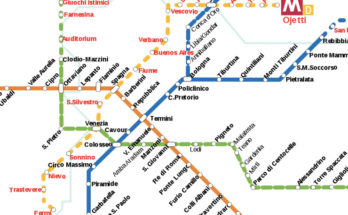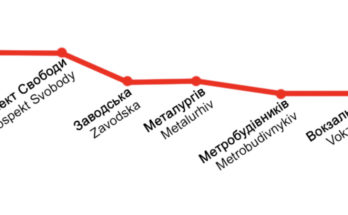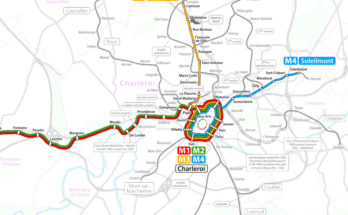The Yekaterinburg metro was the thirteenth rapid transit service to operate in the former USSR back in April 1991. It’s 12.7 kilometers long and serves nine stations along its entire route. Daily it moves around 130,000 people (in 2012)
The initial approach of the system consisted of 3 lines with triangle-shaped intersection in the city center. Today it seems very difficult see this project completed, especially for reasons of funding, but due to the large use of the system line 2 is already in progress: the first section has a length of 4.5 km and 4 stations: Metallurgicheskaya, Tatishchyevskaya, Ploshchad Kommunarov and Ploshchad 1905 Goda.
Like other Russian metro systems (Moscow, St. Petersburg, …) its design is typically Soviet. The stations artistic style is notable for its majesty … although the financial crisis left many of them unfinished.
Lines and stations
Line 1 connects the industrial areas in the north of the city to the center, getting to the Ural’skaya train station.
Stations: Prospekt Kosmonavtov, Uralmash, Mashinostroiteley, Uralskaya, Dinamo, Ploshchad 1905 Goda, Geologicheskaya, Bazhovskaya, Chkalovskaya, Botanicheskaya
WikiCommons Map
Frequency and hours
The total time to make the journey is 12 minutes. Trains operate from 6:00 until 24:00. The frequency varies between 4 and 8 minutes. 4 in peak hours and 8 minutes on weekends.
Fares
Tokens are used in the underground of Yekaterinburg. The price of a single journey is 23 rubles.
There is also the electronic card EKARTA with more competitive prices for citizens, students, pensioners and disabled.
Curious facts
Yekaterinburg was formerly known as Sverdlovsk. It’s considered the unofficial capital of the Urals, natural division between Europe and Asia.
Yekaterinburg metro is one of the most widely used in Russia, in particular is the fourth system just after Moscow Metro, St. Petersburg and Novosibirsk.



